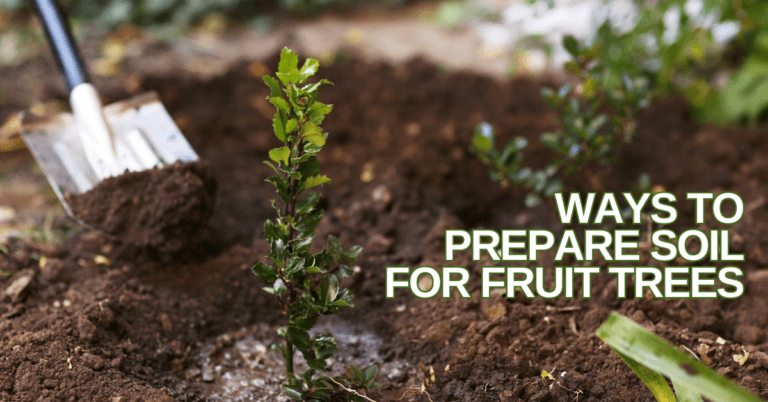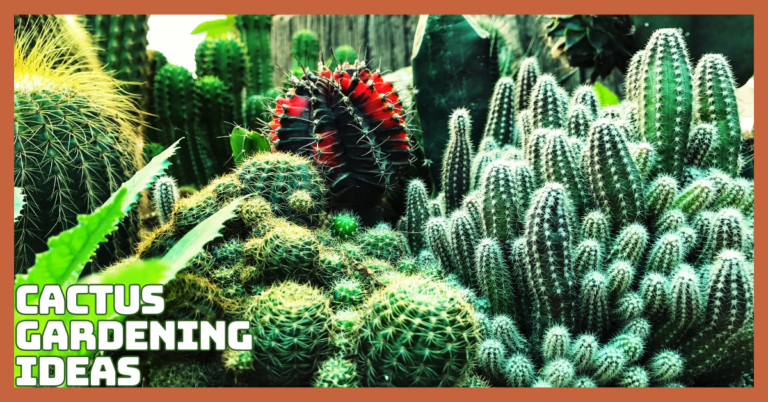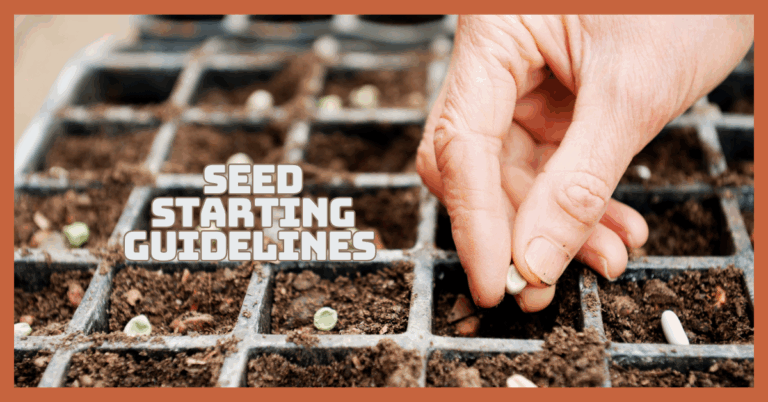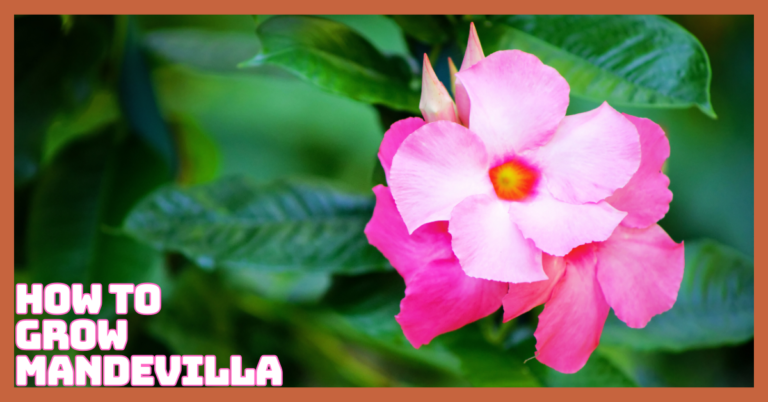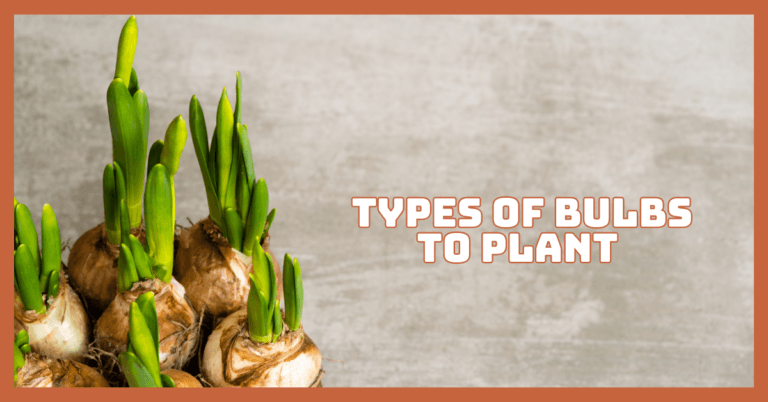The Beginner’s Feijoa Growing Guide
The Beginner's Feijoa Growing Guide
Feijoa, also known as pineapple guava, is a delightful fruit tree native to South America but widely cultivated in regions with mild, Mediterranean-like climates worldwide.
With its unique flavour reminiscent of a pineapple, guava, and mint blend, feijoa has gained popularity among fruit enthusiasts and gardeners.
Growing your feijoa tree can be a rewarding experience, offering delicious fruit and ornamental beauty with its glossy green leaves and striking flowers.
In this comprehensive guide, we'll explore everything you need to know to cultivate feijoa successfully in your garden or orchard.
Every stage of the growth process will be thoroughly covered, from choosing the best type and preparing the soil to planting, watering, and pruning methods.
With the information and techniques in this article, you may cultivate healthy feijoa trees and reap the benefits of a plentiful harvest for many years, regardless of your experience gardening or desire to try something new.
Different Feijoa Varieties And Types
Feijoa, or pineapple guava or guavasteen, offers several varieties catering to different growing conditions and tastes. Here are some of the most popular feijoa varieties:
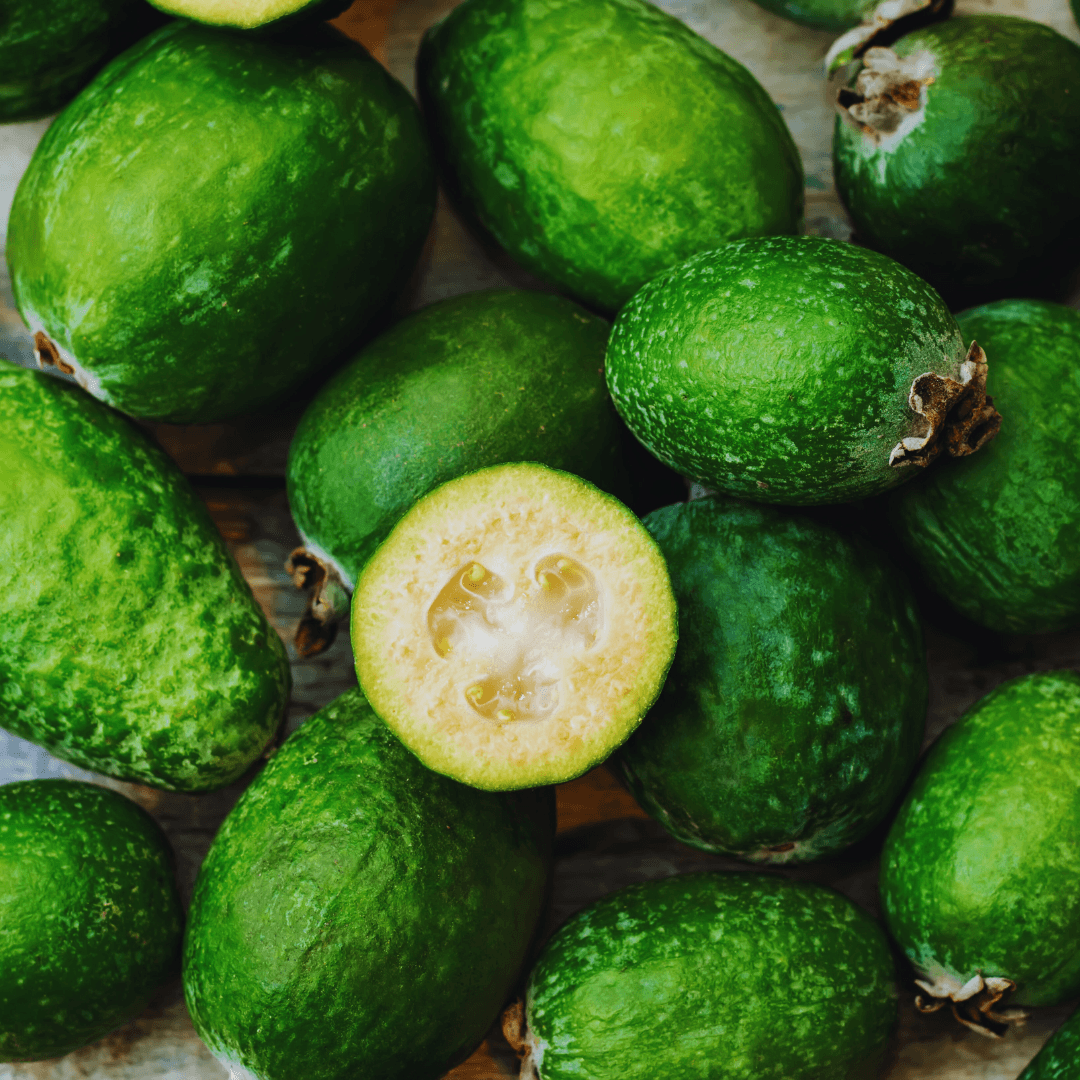
1. Apollo Feijoa
Apollo is one of the most popular feijoa varieties, known for its large, oval-shaped fruit that boasts a smooth texture and sweet, aromatic flavour.
This mid-season variety typically matures in the fall, providing a bountiful harvest of juicy, flavourful fruits perfect for fresh eating or culinary uses.
Apollo trees are partially self-fertile, meaning they can produce fruit independently, but they benefit significantly from cross-pollination with another feijoa variety.
This cross-pollination results in larger and more abundant yields. The Apollo variety is also valued for its vigorous growth and resilience, making it a great choice for novice and experienced gardeners.
With proper care, including regular watering, fertilization, and occasional pruning, Apollo feijoa trees can thrive in various climates, particularly those with mild winters and warm summers.
This variety’s delightful fruit and hardy nature make it a standout addition to any garden or orchard, promising a rewarding and delicious harvest season after season.
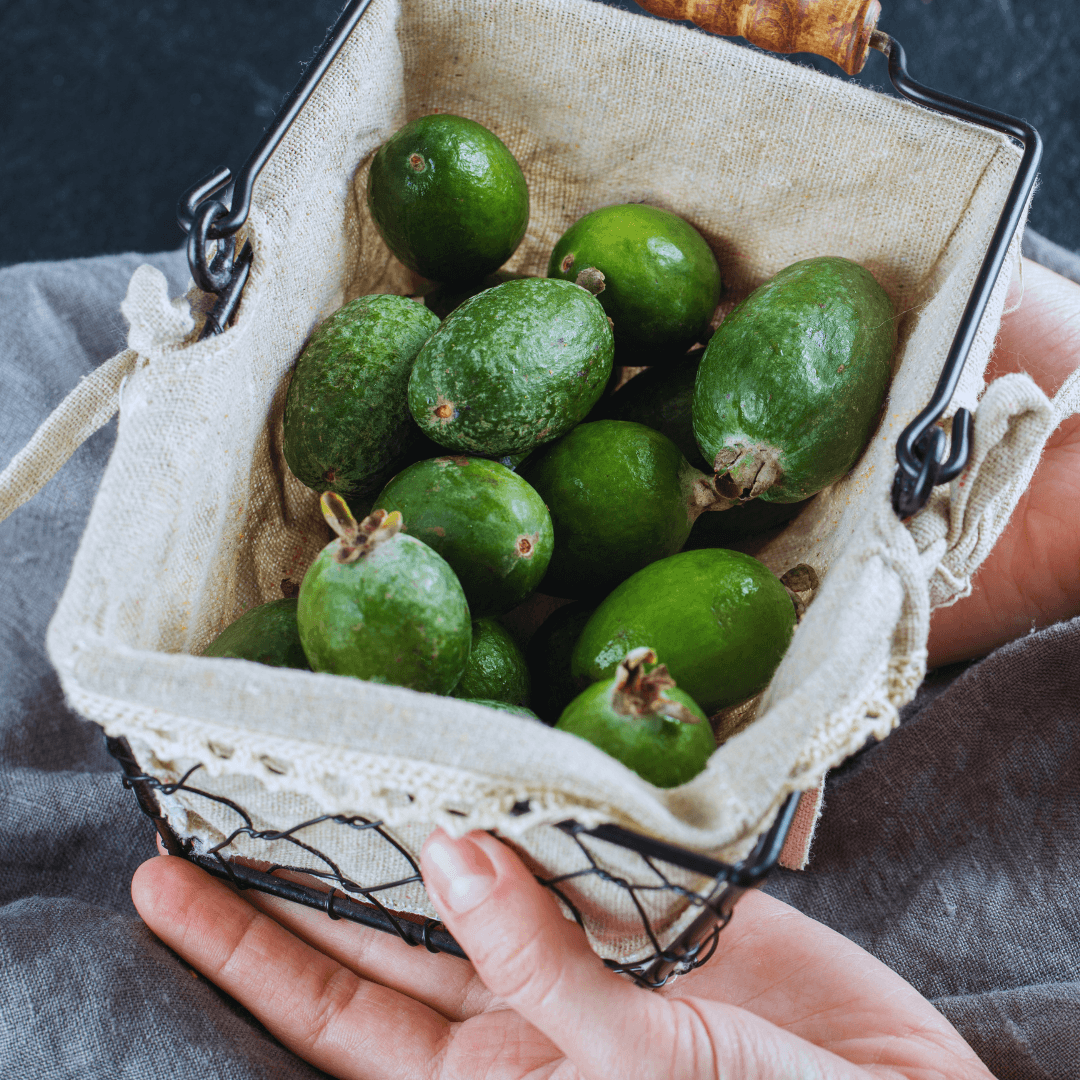
2. Mammoth Feijoa
The Mammoth Feijoa is renowned for its exceptionally large fruit, making it a standout among feijoa enthusiasts.
Each fruit boasts a sweet, slightly tangy taste with a creamy, smooth texture, perfect for fresh consumption or culinary applications.
Mammoth trees mature from mid to late season, extending the harvest period and providing ample fruit well into the fall.
While Mammoth trees are partially self-fertile, they yield significantly better when cross-pollinated with another feijoa variety.
This cross-pollination not only increases the quantity of the fruit but often enhances its size and quality.
Mammoth trees are vigorous growers, adapting well to various climates, particularly mild winters and warm summers.
With proper care, including regular watering, fertilization, and occasional pruning, Mammoth feijoa trees can thrive and produce bountiful harvests.
Their impressive fruit size and delightful flavour and texture make Mammoth popular for gardeners seeking a high-yield, visually appealing addition to their orchards or gardens.
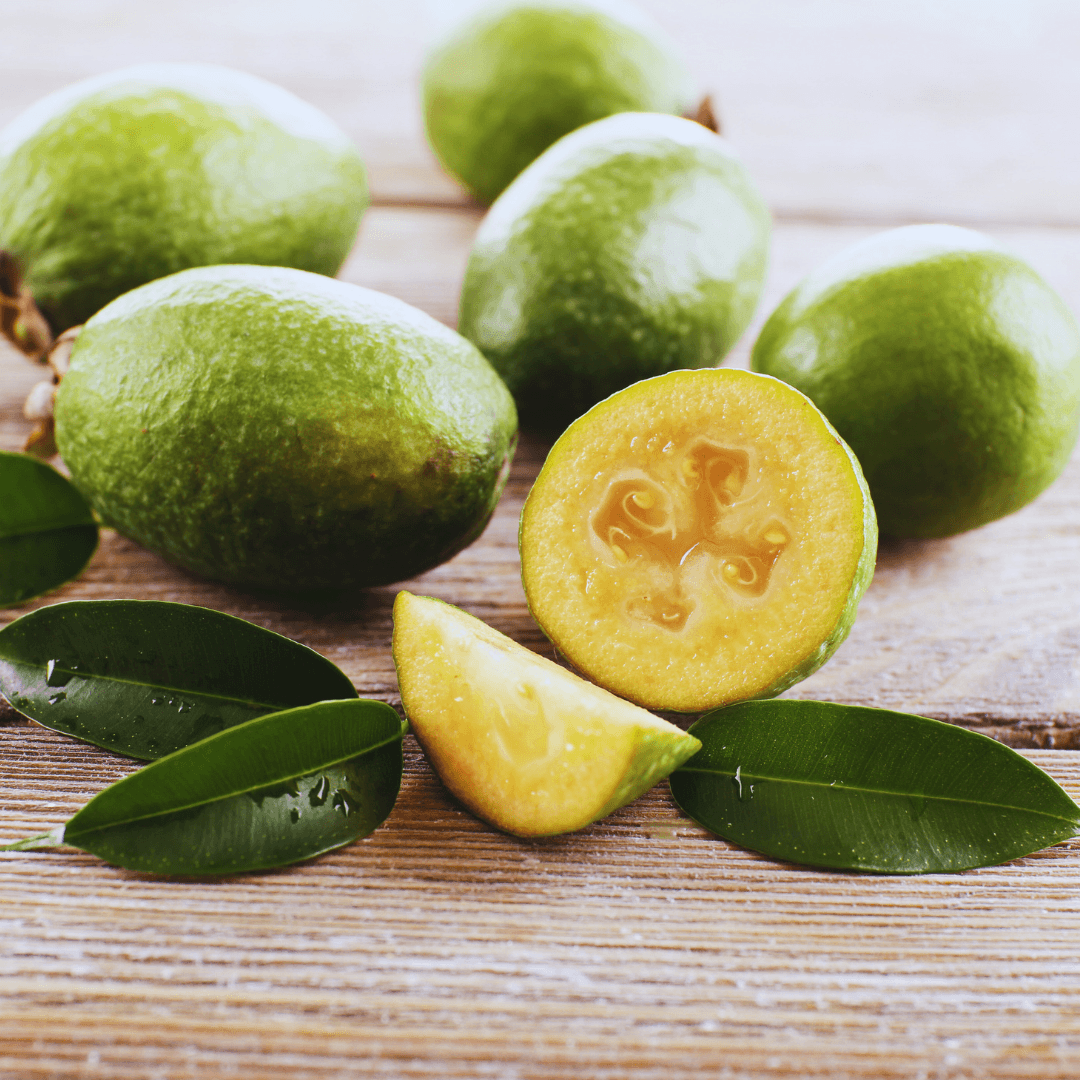
3. Unique Feijoa
Unique is a highly reliable feijoa variety, prized for its consistent, heavy-yielding, medium-sized, oval fruits.
These fruits have a robust, sweet flavour, making them a delightful choice for fresh eating, cooking, or preserves.
Unique matures early to mid-season, providing an ample harvest early in the growing period. One of its most appealing characteristics is its self-fertility, making it an ideal option for those who can only plant a single tree or prefer a simpler gardening setup.
Despite being self-fertile, Unique still produces a generous amount of fruit without cross-pollination.
This variety is also known for its vigorous growth and resilience, making it suitable for various climates and soil types.
Regular care, including proper watering, fertilization, and occasional pruning, will help maintain its health and productivity.
Unique’s dependable performance and delicious fruits make it an excellent choice for gardeners seeking a straightforward yet rewarding feijoa growing experience.
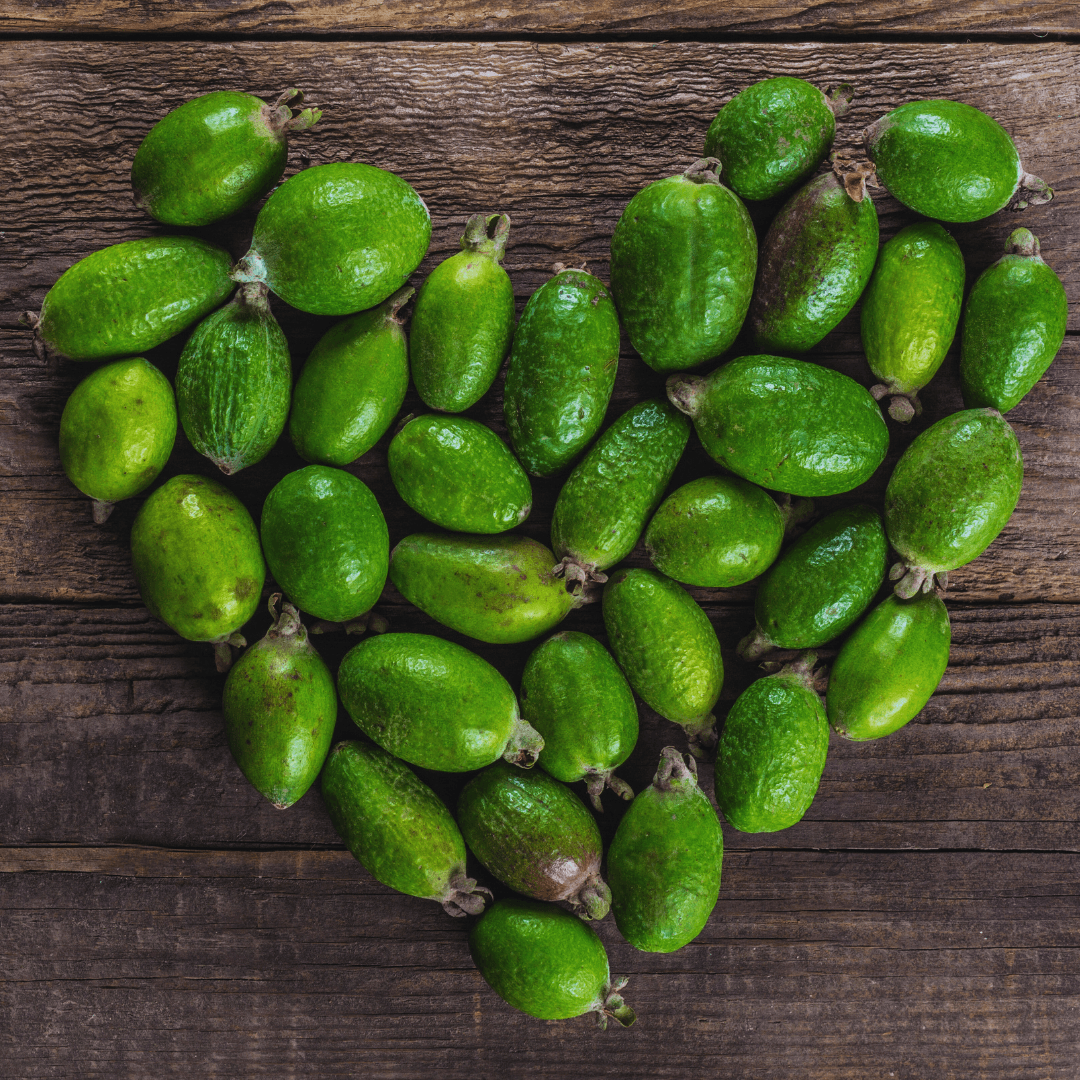
4. Coolidge Feijoa
Coolidge is a prized feijoa variety that produces medium to large fruits with a balanced sweet-tart flavour.
This hardy variety is especially suited to cooler climates, demonstrating robust performance even in less-than-ideal conditions.
Maturing mid-season, Coolidge provides a reliable harvest of delicious fruits ideal for fresh consumption, baking, or preserving.
One of the key advantages of the Coolidge variety is its self-fertility, making it an excellent choice for those who can only plant a single tree.
However, like many feijoas, Coolidge benefits from cross-pollination, which can enhance the fruit's yield and size.
This variety's resilience and ease of growth make it a favorite among gardeners, requiring minimal care beyond regular watering, fertilization, and occasional pruning to maintain health and productivity.
Coolidge’s flavourful fruit and adaptability to cooler climates ensure a rewarding gardening experience, delivering a plentiful harvest season after season.
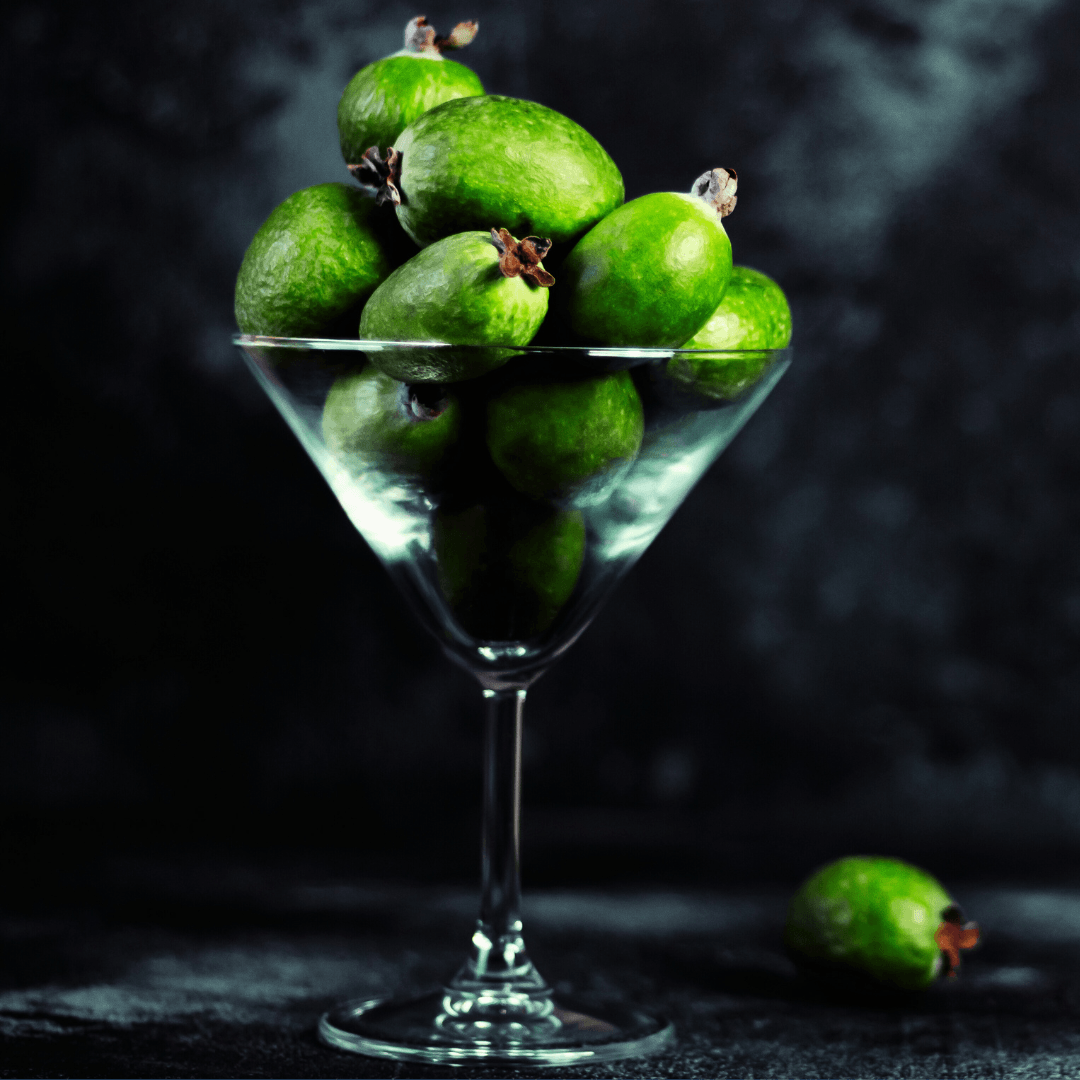
5. Triumph Feijoa
Triumph is a feijoa variety that produces medium to large fruits known for their rich, aromatic flavour.
While the fruit has a slightly gritty texture, it is nonetheless very flavourful, making it a favorite for fresh eating and use in various culinary applications.
Triumph matures from mid to late season, ensuring a plentiful harvest towards the end of the growing period.
This variety is self-fertile, which means it can produce fruit independently; however, it benefits significantly from cross-pollination with other feijoa varieties, resulting in improved yield and fruit quality.
The Triumph tree is robust and adaptable, thriving in various growing conditions with proper care, including regular watering, appropriate fertilization, and periodic pruning.
Its ability to produce flavourful, aromatic fruit reliably makes Triumph a popular choice among gardeners and fruit enthusiasts looking to add a unique and productive fruit tree to their collection.

6. Nazemetz Feijoa
Nazemetz is a vigorous feijoa variety that produces medium-sized, sweet, and juicy fruits with a pleasantly tangy flavour.
This mid-season variety is celebrated for its robust growth and heavy fruit production when cross-pollinated.
Unlike some self-fertile varieties, Nazemetz requires cross-pollination to achieve an optimal fruit set, making it essential to plant it alongside another feijoa variety to maximize yield.
The fruits of Nazemetz are highly prized for their flavour, making them ideal for fresh consumption and for use in desserts, preserves, and culinary dishes.
The tree is resilient and adaptable, capable of thriving in various climates and soil types. It receives regular care, including consistent watering, proper fertilization, and occasional pruning to maintain its shape and health.
Nazemetz is a great addition to any garden because of its robust growth and sweet, tart fruit combination. It provides a plentiful and delectable crop every season.

7. Albert's Supreme Feijoa
Albert's Supreme is renowned for its large, sweet, and aromatic fruits, making it a standout choice for feijoa enthusiasts.
The tree is vigorous and capable of producing heavy yields, especially with optimal growing conditions.
From mid to late season, Albert's Supreme offers an extended harvesting period, ensuring a plentiful supply of delicious fruit.
While this variety is partially self-fertile, it achieves the best yields with cross-pollination from another feijoa variety, enhancing both the fruit's quantity and size.
The robust nature of Albert's Supreme makes it well-suited for various climates and soil types.
However, it thrives best with regular care, including consistent watering, proper fertilization, and occasional pruning to maintain its health and productivity.
The combination of its large, flavourful fruits and high yield potential makes Albert's Supreme a valuable addition to any garden or orchard, promising a rewarding and abundant harvest season after season.
Feijoa Growing Guide
The adaptable fruit tree feijoa, sometimes called pineapple guava, is native to South America but grows best in areas with temperate, Mediterranean-like temperatures.
Due to its distinct flavour, which combines guava, pineapple, and mint, gardeners and fruit specialists have come to love it.
Feijoa may produce beautiful ornamental plants and tasty fruit, making it an enjoyable growing experience.
1. Site Selection For Feijoa Trees
A sunny spot with well-draining soil is essential when choosing a planting site for feijoa. Feijoa trees grow and yield their greatest fruit in full sun, though they can withstand some shade.
Plenty of sunshine guarantees strong growth and improved fruit quality and quantity. Waterlogging can cause root rot and other fungal diseases, so having well-draining soil is important.
Consider supplementing your soil with organic matter, such as compost, or planting on a small mound to promote drainage if your soil is heavy clay or prone to poor drainage.
Feijoas also favour somewhat acidic soil (pH range of 5.5 to 7.0) over neutral soil. Before planting, test the soil pH and adjust using appropriate soil amendments if necessary.
Ensuring the right site conditions will establish a healthy feijoa tree, leading to vigorous growth and abundant fruit production.
Regularly monitor the site's sun exposure and soil condition to maintain an optimal growing environment for your feijoa tree.
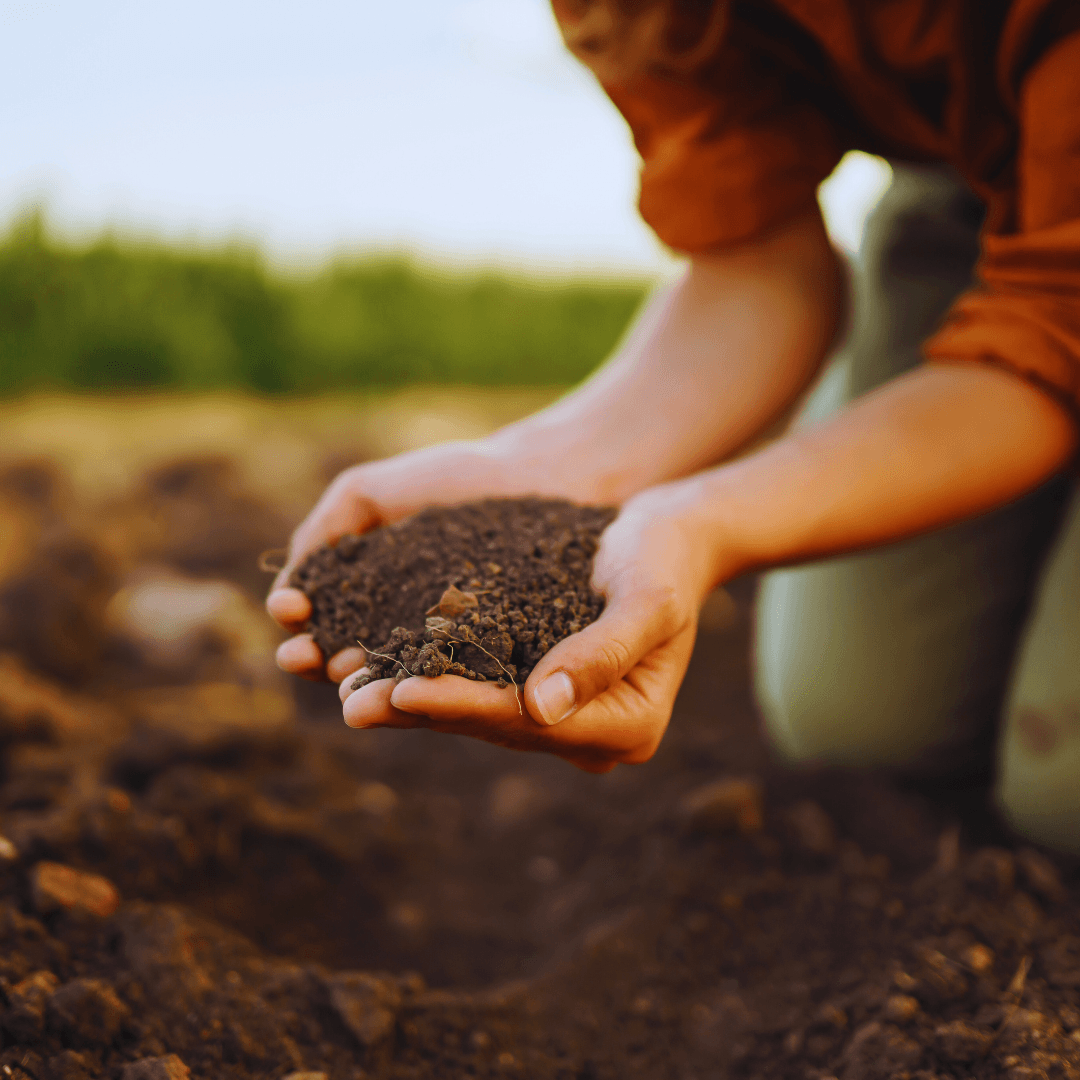
2. Soil Preparation For Feijoa Trees
Proper soil preparation is necessary for good feijoa tree growth. To avoid root rot and other water-related problems, start by improving drainage and fertility in the soil by adding compost.
The organic matter compost adds to the soil, encouraging fruit production and strong tree growth.
At a pH of 5.5 to 7.0, feijoas grow best in slightly acidic to neutral soil. Pre-planting pH testing and appropriate adjustments to the soil are advised.
If the soil is too acidic, you can raise the pH by incorporating lime; if it's too alkaline, sulphur or peat moss can help lower the pH.
Additionally, ensure the soil is loose and well-aerated to allow the roots to establish easily. To improve drainage, consider further amending with sand or perlite for heavy clay soils.
Preparing the soil creates a favourable environment for your feijoa tree, setting the stage for healthy growth and a bountiful harvest.
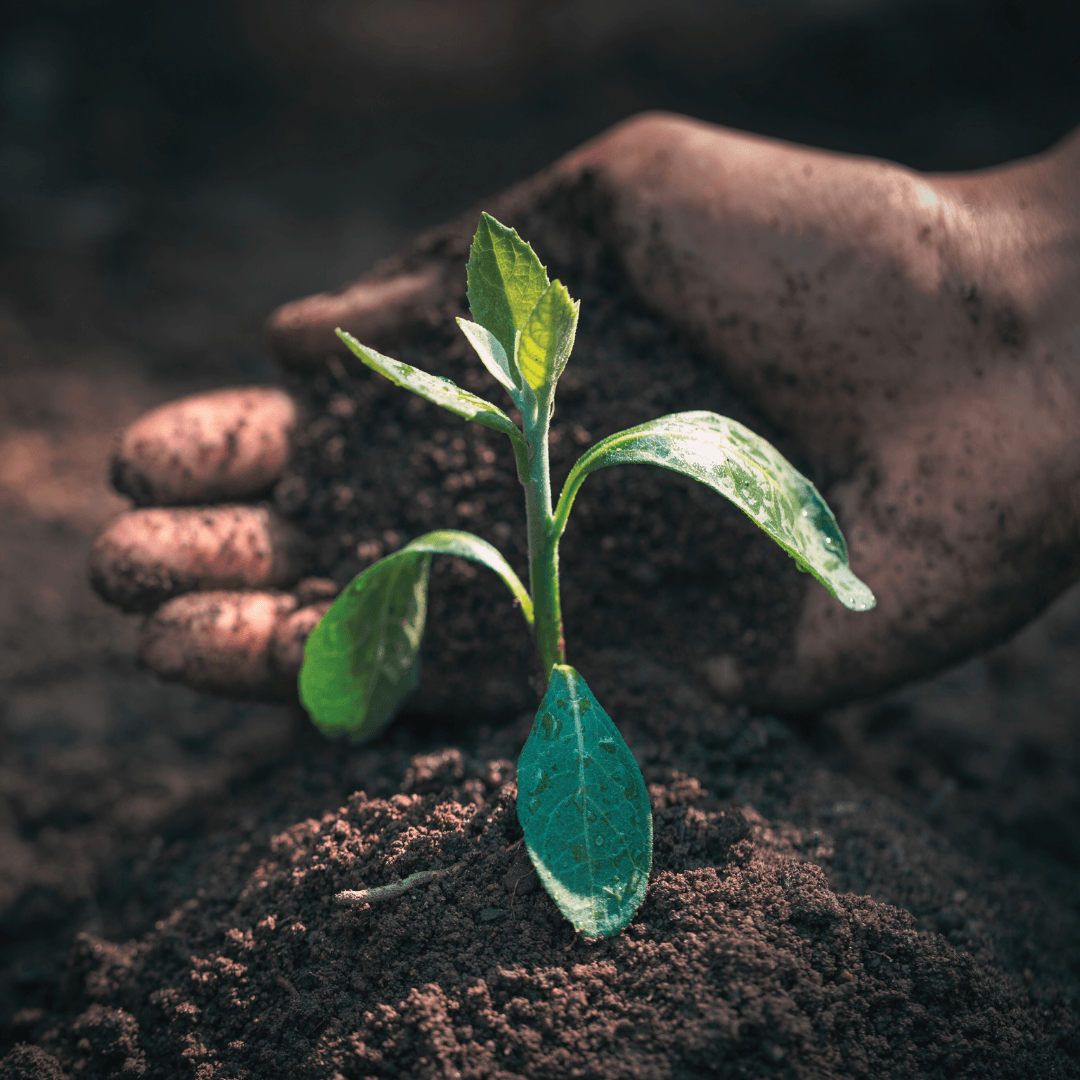
3. Planting A Feijoa Tree
While planting a feijoa tree, dig a hole that is as deep and twice as wide as the root ball. This provides the roots with abundant space to expand and establish themselves.
If the tree's roots are compacted, carefully loosen them before removing them from its container.
Make sure the top of the root ball is level with the surrounding soil surface, and position the tree in the center of the hole.
To remove air pockets that impede root growth, start backfilling the hole with the excavated dirt and compress it firmly but gently around the roots.
After filling the hole, make a small mound or basin around the tree's base to aid with water retention.
Give the tree plenty of water to help the soil settle and provide the roots with some early moisture.
Composted material or straw mulching the area surrounding the base can assist in controlling soil temperature and moisture retention.
A healthy feijoa tree mostly depends on proper planting, which fosters robust root development and rapid growth.

4. Watering A Feijoa Tree
Consistent watering is crucial for establishing a healthy feijoa tree, particularly during the first year after planting.
Young feijoa trees require regular watering to help their roots establish and support vigorous growth.
During this initial period, check the soil moisture frequently and water whenever the top inch of soil feels dry.
Once the tree is established, usually after the first year, it becomes more drought-tolerant.
However, even mature feijoa trees benefit from regular watering, especially during dry spells and the fruiting season.
Consistent moisture helps the tree produce better-quality fruit with higher yields. Water should be drained deeply to reach the deeper roots and fully permeate the soil.
Mulching around the tree's base can help retain soil moisture and reduce the watering frequency.
By maintaining proper watering practices, you can ensure a healthy, productive feijoa tree with abundant fruit.
5. Fertilization Of Feijoa Trees
The health and productivity of feijoa trees depend on proper fertilization. To ensure continued development, treat your tree with a balanced fertilizer—such as a 10-10-10 blend—in the early spring when new growth starts and again in the middle of summer.
The vital nutrients these applications supply—nitrogen, phosphorus, and potassium—support robust leaf, root development, and fruit yield.
The key is to avoid high-nitrogen fertilizers, as they can encourage lush, green growth at the expense of fruit development. Instead, focus on an all-encompassing plan that supports the tree's growth in all aspects.
Incorporate the fertilizer into the soil by working it gently into the tree's base and up to the drip line.
Apply fertilizer to the tree's base, extend it to the drip line, and gently work it into the soil. Water thoroughly after fertilizing to help the nutrients penetrate the soil and reach the roots.
Additionally, consider using organic fertilizers or compost to release nutrients and improve soil health steadily.
Regular fertilization, proper watering, and care will help ensure a robust and fruitful feijoa tree.
6. Pruning Feijoa Trees
Pruning is essential to maintain feijoa trees' health, shape, and productivity. It's best to prune them in late winter or early spring while the tree is dormant to minimize stress and promote proper healing.
Focus on removing any dead, damaged, or diseased branches to improve overall tree health. Additionally, trim branches that rub against each other or cross, which can create wounds that attract pests and diseases.
Moderate pruning can also enhance sunlight penetration and airflow throughout the canopy, reducing the risk of fungal infections and ensuring consistent fruit ripening.
When pruning, use clean, sharp tools to make smooth cuts above buds or the junction of lateral branches, avoiding cutting into the branch's collar to prevent infection.
Following these pruning practices, you can maintain a healthy, well-formed feijoa tree that produces abundant, delicious fruit.
7. Pests & Diseases Of Feijoa Trees
Feijoa trees are generally resilient against pests and diseases but may encounter issues such as fruit fly infestations, scale insects, and root rot.
Fruit flies can damage feijoa fruits by laying eggs inside, leading to premature fruit drop and spoilage.
To manage fruit fly populations, utilize traps baited with attractants or apply organic sprays that are safe for the tree and the environment.
Scale insects, including armoured and soft scales, can also threaten feijoa trees by feeding on sap and weakening the plant.
Treat scale infestations by applying horticultural oil during the dormant season to suffocate and eliminate the insects.
Additionally, feijoa trees are susceptible to root rot, especially in poorly drained soil. To prevent root rot, ensure the soil drains properly by adding organic matter to thick soils and avoiding overwatering.
Implementing these pest and disease management practices can help maintain the health and vigour of your feijoa tree, ensuring a successful and productive growing season.
8. Harvesting Feijoa Fruit
Feijoa harvesting typically occurs from mid-fall to early winter, when the fruits reach their peak ripeness.
When the fruit can be readily plucked from the tree with a slight twist, it is ripe and ready for harvesting.
Feijoas are best enjoyed fresh; their unique flavour is most vibrant when eaten straight from the tree.
However, if you have an abundant harvest, feijoas can also be used in various culinary creations, including jams, jellies, chutneys, pies, and desserts.
Their aromatic flavour adds a delightful twist to both sweet and savoury dishes. When harvesting, handle the fruit carefully to avoid bruising, as this can reduce their shelf life.
Store harvested feijoas in a cool, dry place or the refrigerator for extended freshness. By harvesting at the peak of ripeness and exploring different culinary uses, you can fully enjoy the bounty of your feijoa tree's harvest season.
FAQ
1. How Long Does It Take For Feijoa Trees To Produce Fruit?
Answer: Feijoa trees typically produce fruit within 3 to 5 years after planting, although some varieties may bear fruit under optimal growing conditions as early as 2 years.
2. Are Feijoa Trees Slow-Growing?
Answer: Feijoa trees typically grow between 12 and 24 inches a year, which is regarded as a moderate growth rate. However, growth rates can differ based on soil type, climate, and variety.
3. Are Feijoa Flowers Edible?
Answer: Yes, you can eat feijoa flowers. Like fruit, they are sweet and tart, and they can enhance the flavour and appearance of salads, desserts, and drinks.
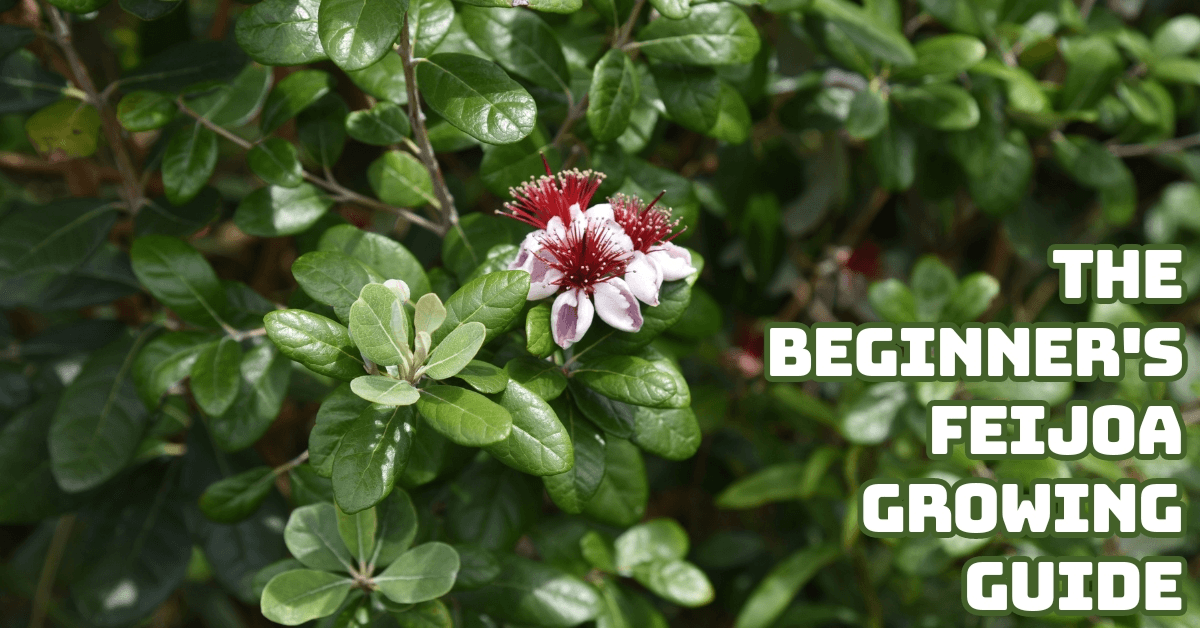
Conclusion
Growing feijoas can be a rewarding experience for novice and experienced gardeners. With the right care and attention, these resilient plants will provide delicious fruit and beautiful greenery year after year.
Whether growing them for their unique flavour and health benefits or simply adding a touch of exotic beauty to your garden, feijoas are a fantastic choice.
Remember to start with healthy plants, ensure they receive adequate sunlight and water, and protect them from pests.
By following the tips and guidelines provided in this guide, you'll be well on your way to successfully cultivating your very own feijoa trees. Happy gardening!
I trust you enjoyed this article on The Beginner's Feijoa Growing Guide. Please stay tuned for more blog posts soon. Take care!
JeannetteZ
>>>Please click here to read my all-inclusive article, About The Essential Companion Planting Guide<<<
>>>Please click here to read my all-inclusive article about Container Gardening<<<
>>>Are you interested in homegrown herbs and medicine? Please click here to find out more about it!<<<
Your Opinion Is Important To Me
Do you have thoughts, ideas, or questions? I would love to hear from you. Please leave me your questions, experiences, and remarks about this article, The Beginner's Feijoa Growing Guide, in the comments section below. You can also email me at Jeannette@Close-To-Nature.org.
Disclosure
This post may contain affiliate links. As an Amazon Associate and other affiliate programs, I earn from qualifying purchases at no extra cost to you. Please read my full affiliate disclosure.
You might also enjoy these blog posts:
Best Ways To Grow Jackfruit From Seeds: A Step-By-Step Guide
A Closer Look At The Fascinating Species Of Hyenas
How To Create A Healing Garden
How To Prepare Soil For Planting Herbs



